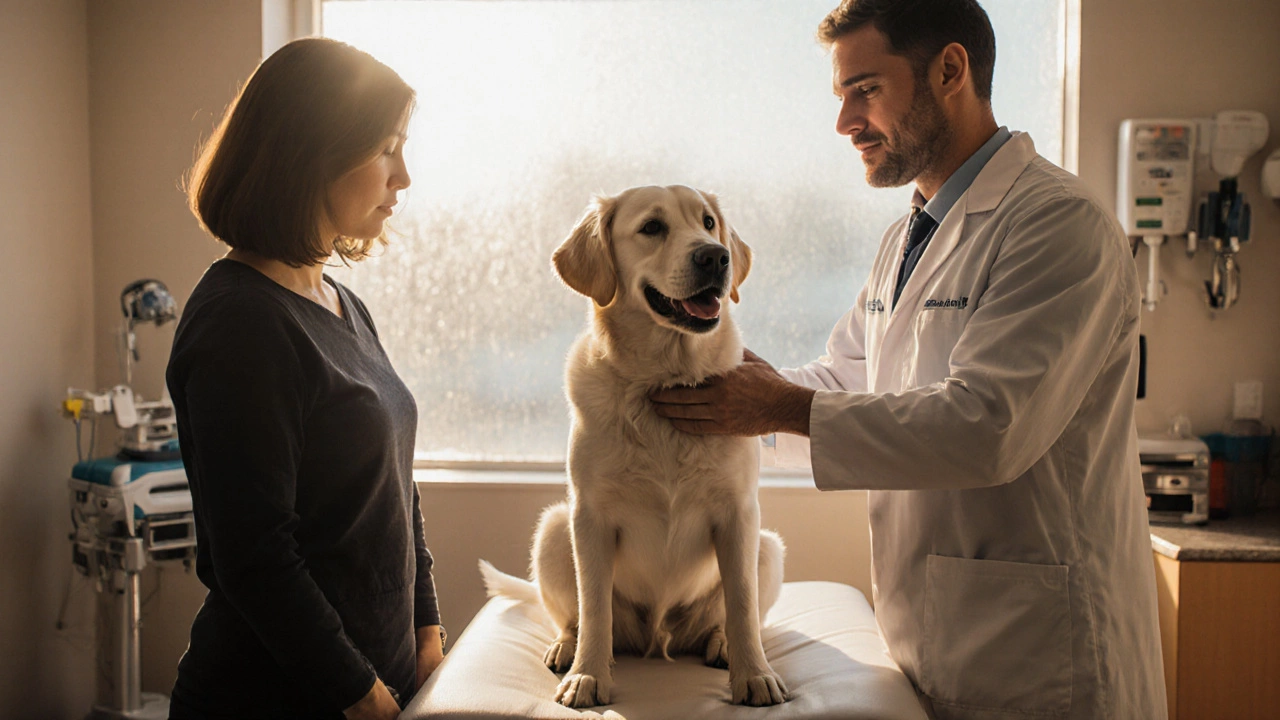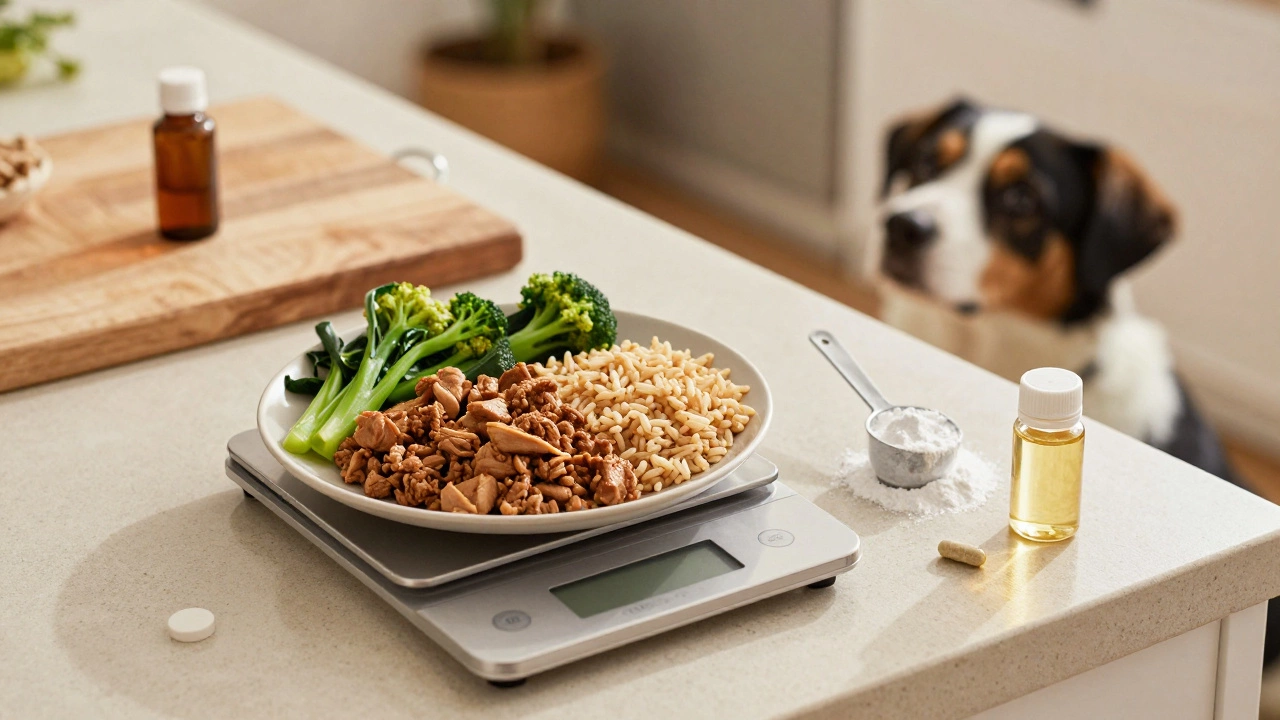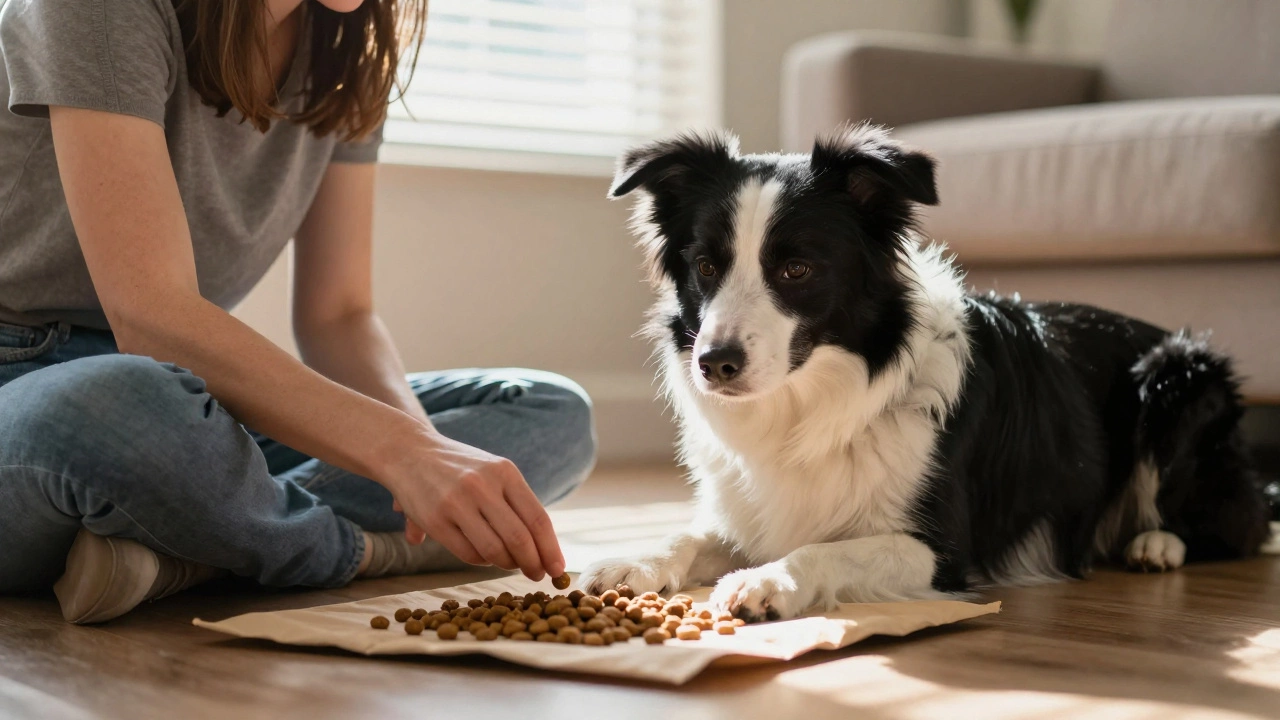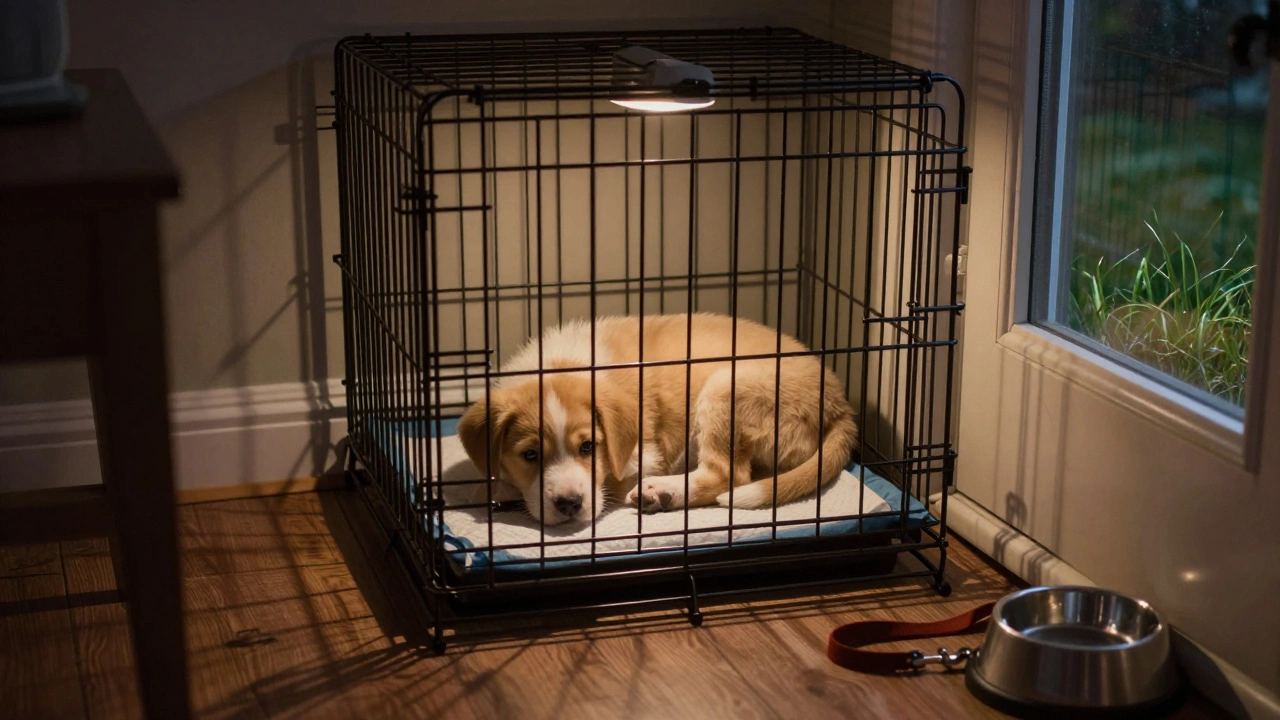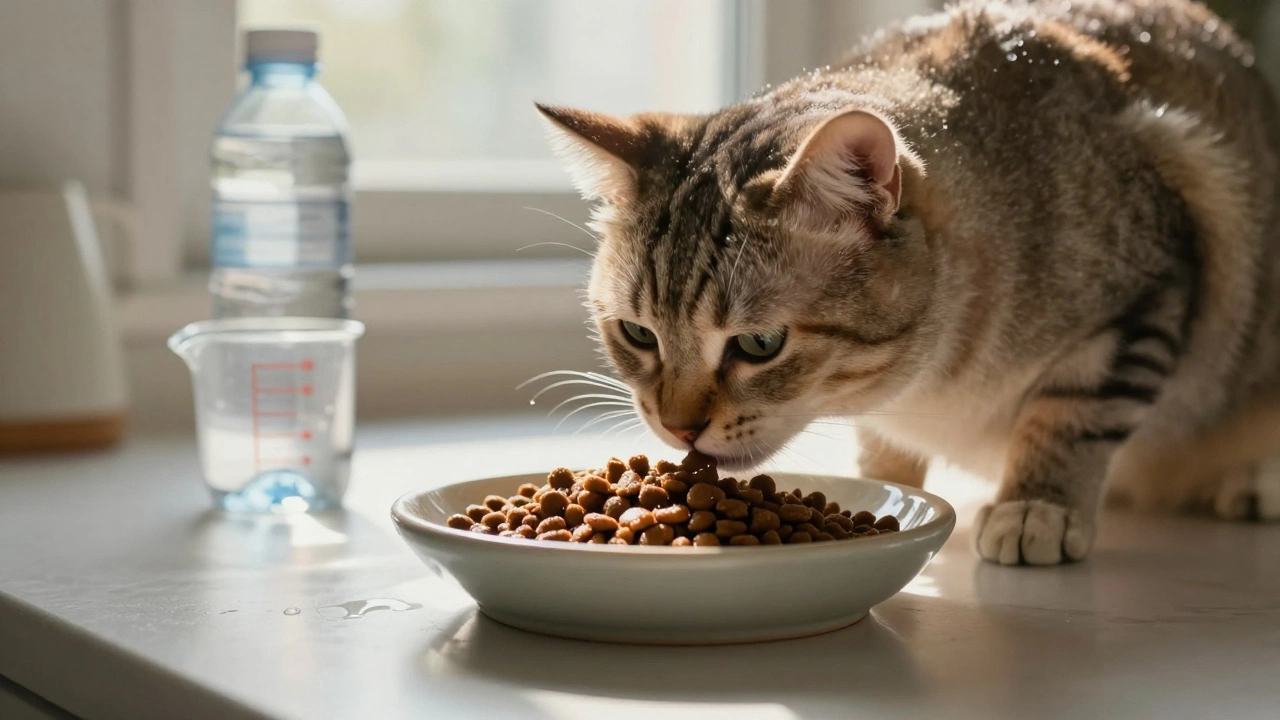Dog Vaccination Schedule Calculator
Calculate Your Dog's Vaccination Schedule
This tool helps determine the optimal vaccination schedule based on your dog's age, health status, and lifestyle to balance protection with potential risks.
Quick Takeaways
- Most side effects are mild and short‑lived, but severe reactions can happen.
- Overvaccination may stress a dog’s immune system and add unnecessary cost.
- Incorrect timing can leave puppies vulnerable because of maternally derived antibodies.
- Working closely with a Veterinarian and following a tailored schedule reduces most risks.
- Keep a record of each shot and watch for any reaction for at least 48hours.
Vaccinating dogs is a routine part of responsible pet ownership, yet many owners wonder about the flip side. While vaccines protect against deadly diseases, they aren’t without drawbacks. This guide walks you through the most common cons, explains why they happen, and shows how to keep the balance between protection and risk.
What Dog vaccination actually is
Dog vaccination involves injecting a killedorattenuated form of a virus or bacterium to train the animal’s immune system. The goal is to produce antibodies without causing the disease itself. In the UK, the core vaccines-
- Canine distemper
- Canine parvovirus
- Rabies (required for travel)
are recommended for all dogs, while non‑core vaccines target regional threats like leptospirosis or bordetella. Understanding what each shot does helps put the risks into perspective.
Why vaccines are still the default recommendation
Diseases such as distemper and parvovirus can wipe out an entire litter in days. A single dose of a well‑formulated vaccine can give a dog immunity that lasts for years, saving both lives and costly emergency care. The British Veterinary Association (BVA) estimates that widespread vaccination cuts canine disease mortality by over 80%.
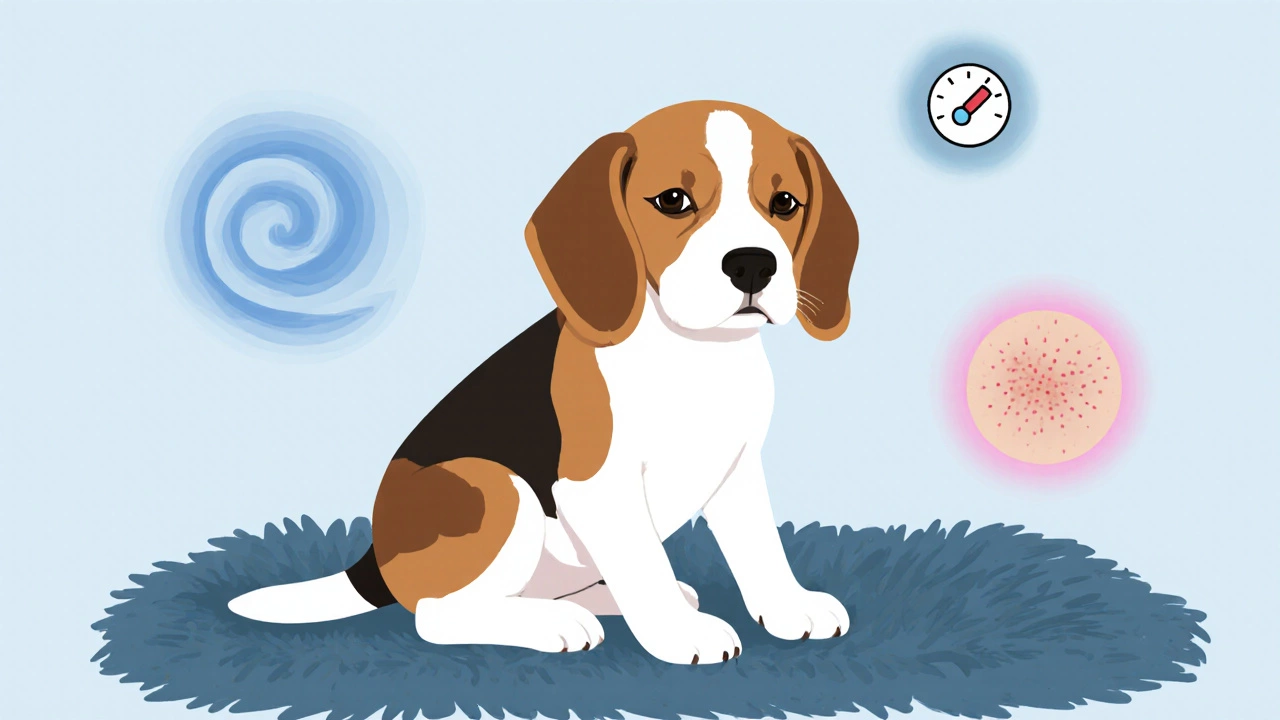
Common concerns and cons
Below are the top reasons owners hesitate or regret vaccinating:
- Immediate side effects (fever, lethargy, soreness)
- Allergic reactions ranging from mild swelling to life‑threatening anaphylaxis
- Overvaccination and cumulative stress on the immune system
- False sense of security that leads to lax hygiene or exposure
- Cost-especially for non‑core vaccines and repeat boosters
- Potential for vaccine‑associated sarcomas (rare but reported in felines, emerging data in canines)
- Interference with maternally derived antibodies (MDAs) in puppies
- Injection site complications such as abscesses or granulomas
Deep dive into each con
1. Immediate side effects
After a shot, many dogs experience a low‑grade fever, loss of appetite, or temporary limpness at the injection site. These reactions usually resolve within 24-48hours. A study by the University of Liverpool (2023) tracked 2,500 dogs and found that 12% displayed at least one mild symptom post‑vaccination.
2. Allergic reactions
Allergies can appear minutes after the injection or develop over a few days. Symptoms include hives, facial swelling, vomiting, or in severe cases, anaphylactic shock. Although severe reactions affect less than 0.01% of dogs, they demand immediate veterinary care.
3. Overvaccination
Giving more shots than the recommended schedule can overload a dog’s immune system, especially in senior or immunocompromised animals. Overvaccination may lead to chronic inflammation, reduced vaccine efficacy over time, and unnecessary expenses. The European Scientific Counsel on Companion Animal Diseases (ESCCAP) recommends extending the interval between boosters for low‑risk adult dogs to five years instead of the traditional three.
4. False sense of security
Once a dog is “up‑to‑date,” owners might relax on parasite control, hygiene, or avoiding high‑risk environments. Vaccines protect against specific pathogens but do not make a dog invincible to all infections.
5. Financial burden
Core vaccines cost around £30-£45 per visit in the UK, while non‑core options can add another £20-£35 each. Annual boosters and travel‑required rabies shots increase the yearly budget, which can be significant for multi‑dog households.
6. Vaccine‑associated sarcomas
Evidence of sarcoma formation after vaccination is strong in cats but still emerging for dogs. A 2022 retrospective analysis of 1,200 canine tumors identified a possible link to repeated adjuvant‑containing vaccines, though the absolute risk remains under 0.001%.
7. Maternally derived antibodies (MDAs)
Puppies receive antibodies from their mother’s colostrum, which can neutralize a vaccine before it stimulates the puppy’s own immune response. If a vaccine is given too early-before MDAs wane-the shot may be ineffective, leaving the puppy vulnerable.
8. Injection site complications
Improper technique or contaminated needles can cause abscesses, granulomas, or scar tissue at the injection site. These issues are rare when administered by a qualified Veterinarian, but they add to post‑vaccination worry.
How to minimize the risks
- Consult a trusted veterinarian about a tailored vaccination schedule based on your dog’s breed, age, health status, and lifestyle.
- Ask about Core vaccines vs. Non‑core vaccines. Skip non‑essential shots if your dog stays mostly at home.
- Monitor your dog for at least 48hours after each injection. Record temperature, appetite, and any swelling.
- Keep a written log of vaccine types, batch numbers, and dates. This helps spot patterns if an adverse reaction recurs.
- Consider vaccine titers (blood tests) for older dogs to verify existing immunity before giving another booster.
- If your dog has a history of allergic reactions, discuss pre‑medication options such as antihistamines.
- For puppies, follow the recommended series (typically at 8, 12, and 16weeks) to work around MDAs.
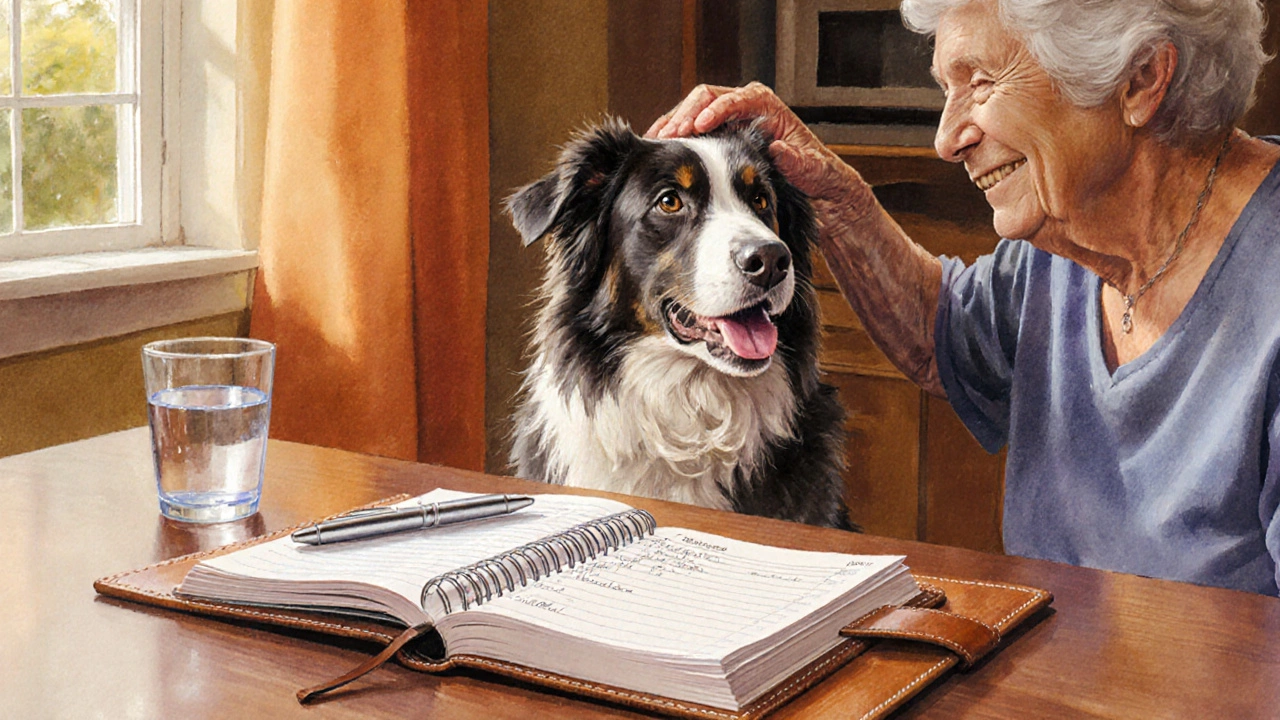
Decision checklist: Is a specific vaccine right for your dog?
| Vaccine type | Common mild reaction | Rare severe reaction | Frequency (per 1,000 dogs) |
|---|---|---|---|
| Core (distemper, parvovirus) | Low‑grade fever, soreness | Anaphylaxis | 12 mild / 0.1 severe |
| Rabies (travel) | Transient lethargy | Severe allergic reaction | 8 mild / 0.05 severe |
| Non‑core (leptospirosis) | Swelling at injection site | Vaccine‑associated sarcoma (very rare) | 15 mild / 0.001 severe |
Remember, the numbers above are averages from UK veterinary clinics. Your dog’s individual risk may be higher or lower depending on health, breed, and environment.
When to say “no” or delay
If your dog is:
- Pregnant or nursing - some vaccines are contraindicated.
- Recovering from illness or on strong immunosuppressive medication - wait until stabilized.
- Over 10years old with chronic health issues - discuss titers instead of routine boosters.
Skipping a single non‑core vaccine is usually safe, but missing core shots can expose your pet to fatal diseases. Weigh the pros and cons with your vet.
Frequently Asked Questions
Can a dog die from a vaccine reaction?
Severe reactions are extremely rare, occurring in less than 1 in 10,000 dogs. Prompt veterinary intervention can almost always save the animal.
Do adult dogs need yearly boosters?
For most healthy adults, the core vaccines can be spaced to every three‑to‑five years. Your vet may recommend earlier boosters if your dog is high‑risk.
What signs should I watch for after vaccination?
Look for fever, loss of appetite, swelling, vomiting, or difficulty breathing. If any symptom worsens after 24hours, call your vet.
Are there alternatives to vaccines?
Blood‑titer tests can confirm existing immunity, but they don’t replace the protective effect of a well‑timed vaccine series.
How much does a typical vaccination visit cost?
In the UK, a core vaccine package usually costs between £30 and £45, while each non‑core addition adds £20‑£35.
Balancing the benefits of disease protection with the potential downsides is a personal decision. By staying informed, watching for reactions, and working closely with a qualified vet, you can keep your dog safe and happy while minimizing the cons of vaccination.

